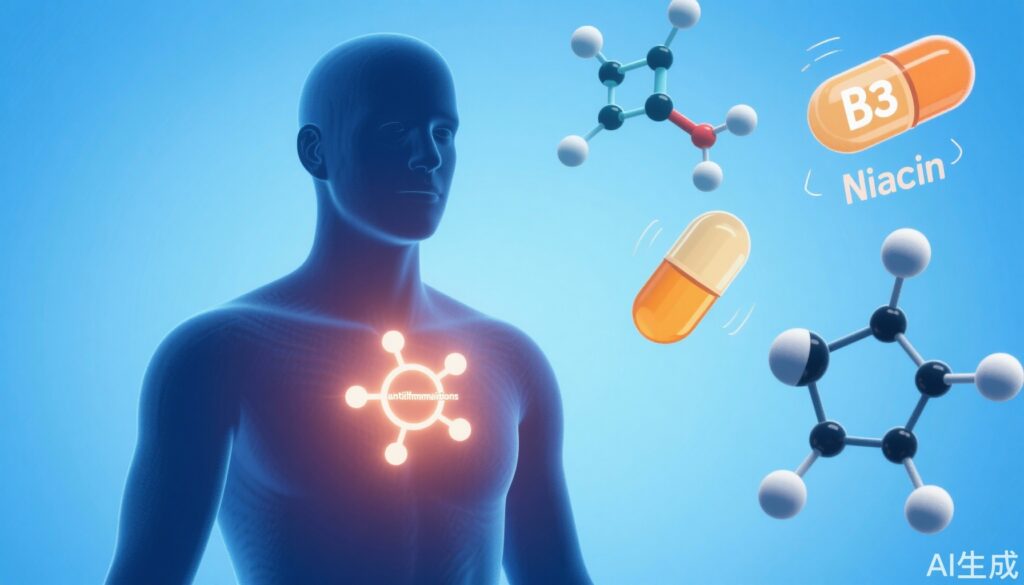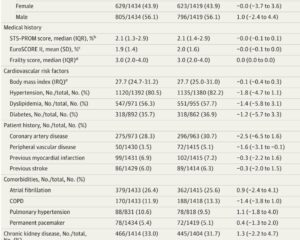Introduction: The Double-Edged Sword of Inflammation
Inflammation is the body’s essential self-defense mechanism against infection and injury. When immune cells detect threats, they mount an inflammatory response to neutralize danger and initiate healing. However, this vital process can become a double-edged sword — excessive or uncontrolled inflammation underlies many serious health conditions, including sepsis, inflammatory bowel disease, and metabolic syndrome.
One of the greatest challenges in medicine is learning how to apply timely “brakes” to an overactive immune response, preventing it from spiraling out of control without compromising the ability to defend the body. Recent research from Tongji Medical College, published in the esteemed journal Cell Metabolism, has uncovered a remarkable natural mechanism within our bodies that could hold the key to this conundrum.
Vitamin B3: The Foundation of Cellular Health and Inflammation Regulation
Vitamin B3, commonly known as niacin, comprises two active forms, niacin and nicotinamide. It plays a central role as a precursor in the synthesis of nicotinamide adenine dinucleotide (NAD+), a critical coenzyme that underpins essential cellular functions such as energy metabolism, DNA repair, and signal transduction pathways.
NAD+ is intimately linked with the initiation, progression, and resolution of inflammatory responses. Therefore, maintaining optimal levels of vitamin B3 — and by extension NAD+ — supports not only general cell health but also the immune system’s capacity to regulate inflammation efficiently.
Discovery of Homocysitaconate: The Body’s Built-In “Fire Extinguisher”
Researchers at Tongji Medical College have identified a new anti-inflammatory metabolite produced within immune cells during inflammation: homocysitaconate (HCA). This molecule emerges through an extraordinary biochemical union between two well-known compounds with opposing effects — itaconate and homocysteine.
- Itaconate is a metabolite released abundantly by activated macrophages (a type of immune cell) and recognized for its anti-inflammatory properties, acting as an “immune sentinel.”
- Homocysteine, on the other hand, is traditionally viewed as a pro-inflammatory molecule linked to chronic conditions like cardiovascular diseases and neurodegeneration when present at high levels.
Under inflammatory stress, these molecules undergo a surprising “chemical marriage” catalyzed by the enzyme S-adenosylhomocysteine hydrolase (AHCY), producing homocysitaconate, which can increase up to 152-fold in inflamed tissue environments.
How Homocysitaconate Controls Inflammation: Decoding the Molecular Clock
Far from being a byproduct, homocysitaconate acts as a crucial signaling molecule. Its main target is methionyl-tRNA synthetase (MARS), an enzyme originally responsible for protein synthesis. During inflammation, MARS is co-opted to catalyze an unusual protein modification known as N-homocysteinylation.
This modification activates the NLRP3 inflammasome, a key driver of inflammatory signaling cascades that amplify immune responses. Excessive activation of NLRP3 contributes to tissue damage and inflammation-related diseases.
Homocysitaconate cleverly binds to a critical site (D312) on MARS, inhibiting its activity and consequently blocking the harmful overactivation of NLRP3 inflammasomes. Additionally, homocysitaconate promotes ubiquitination—a process tagging NLRP3 proteins for degradation via the cell’s waste disposal system—thus halting persistent inflammatory signals at their source.
Researchers call this elegantly timed regulatory mechanism the “MARS-homocysitaconate clock.” It allows the immune system to first launch a protective response, then precisely dial it back to homeostasis, maintaining a delicate balance.
Confirming Therapeutic Potential in Animal Models
Extensive studies in various animal models illustrate the clinical relevance of harnessing homocysitaconate:
- Sepsis: Supplementing homocysitaconate significantly reduced harmful cytokine storms and improved survival rates in sepsis models.
- Chronic Inflammation from High-Fat Diet: The molecule alleviated fat tissue inflammation, a contributor to metabolic syndrome.
- Inflammatory Bowel Disease: Homocysitaconate demonstrated strong anti-inflammatory and tissue-protective effects in mice with colitis.
These findings suggest that homocysitaconate or its modulators could become innovative treatments for a range of inflammation-driven diseases.
Boosting Homocysitaconate Naturally: The Role of Vitamin B3 Supplementation
An exciting aspect of the study is the discovery that boosting the activity of the AHCY enzyme—and thereby increasing endogenous production of homocysitaconate—is achievable by supplementing precursors like nicotinamide riboside (NR), a form of vitamin B3, and pyruvate.
This mechanistic link suggests practical nutritional interventions could enhance the body’s own “inflammation brake,” providing a complementary approach to pharmaceutical therapies.
Redefining Homocysteine: From Villain to Protector
Traditionally, homocysteine has earned a notoriety as a harmful molecule promoting inflammation and vascular damage. This research challenges that simplistic view, showcasing a sophisticated metabolic adaptation whereby homocysteine is converted into a protective agent within specific conditions.
This paradigm shift exemplifies the nuanced complexity of metabolic networks in immune regulation—demonstrating how seemingly detrimental compounds can be transformed into allies in maintaining health.
Expert Perspectives
Dr. Ming Lin, lead author from Tongji Medical College, highlights: “Our bodies naturally carry an internal ‘fire extinguisher’ for inflammation. Our findings open doors to learn how to better activate this system therapeutically, potentially revolutionizing treatment for chronic inflammatory diseases.”
This breakthrough paves the way for the development of new anti-inflammatory drugs and functional foods targeting the AHCY-homocysitaconate-MARS-NLRP3 axis.
A Patient Perspective: Emily’s Journey with Chronic Inflammation
Emily, a 45-year-old woman with inflammatory bowel disease, suffered frequent flare-ups that impaired her quality of life. After learning about emerging research on homocysitaconate and the importance of vitamin B3, she consulted her healthcare provider about nutritional strategies to support her immune balance.
Incorporating vitamin B3-rich foods and supplements alongside her standard treatment, Emily noticed a gradual reduction in inflammation and improved wellbeing. Though individual responses vary, such cases highlight the translational potential of foundational research into patient-centered care.
Conclusion: Towards a New Era of Anti-Inflammatory Therapies
The discovery of homocysitaconate as a natural anti-inflammatory molecular “brake” offers profound insights into the interplay between metabolism and immune regulation. Coupled with vitamin B3 supplementation’s capacity to enhance its endogenous formation, these findings illuminate promising avenues for novel interventions against lethal and chronic inflammatory conditions.
Future research will focus on clinical trials to validate safety and efficacy in humans, as well as the design of targeted drugs and functional foods to harness this intrinsic defense mechanism. Ultimately, learning to effectively “start the extinguisher” within our own bodies could transform approaches to treating inflammation-related diseases across the spectrum.
References
Lin M, Wang J, Chai Y, Chen X, Zhao D, Xie Z, Jiang J, Li H, Huang L, Xing S, Qi D, Mei X. Homocysitaconate controls inflammation through reshaping methionine metabolism and N-homocysteinylation. Cell Metab. 2025 Aug 22:S1550-4131(25)00357-2. doi: 10.1016/j.cmet.2025.08.001. Epub ahead of print. PMID: 40876449.



